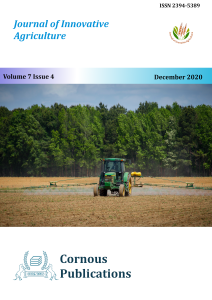Tef is widely cultivated grain crop in Ethiopia by concerning 6.5 million smallholder farmers on about 30% of the full-scale region distributed to cereal crops. The goal of this experiment was to identify and release stable and high yielding tef genotype for moisture stress areas of country and to determine and understand the effect of genotype, environment, and their interaction on grain yield of tef. Fourteen selected tef genotypes obtained from two autonomous crosses and progressed through alternative for a minimum of eight generations, and a local and standard check varieties, were tested over a two years at seven tef growing sites in moisture stress areas of Ethiopia namely Debre Zeit, Alemetena, Dhera, Axum, Sirinka, Minjar and Mehoni, using randomized complete block design with four replications. Among the genotype tested, DZ-Cr-387 x 3774-13(RIL120B) was found predominant in terms of yield at tested moisture stress environments. This genotype was obtained through targeted cross between DZ-Cr-387 (Quncho) selected as a maternal parent for its high yielding capability and wide adaptability and, 3774-13 as a pollen parent for its extraordinarily white seed quality and earliness. The genotype DZ-Cr-387 x 3774-13(RIL120B) gave the average grain yield 2740 kgha-1 pooled across all environments. This genotype "DZ-Cr-387 x 3774-13(RIL120B)” was later released as DZ-Cr-453(RIL 120B) or Bora by the National Variety Release Committee in 2019, and with a yield advantage of 5.7% and 24.48% over the standard (Boset) and local check, respectively.
Six species of Eucalyptus viz., E. alba, E. camaldulensis, E. microtheca, E. tereticornis, E. polycarpa and E. torelliana, were subjected to full diallel mating. The cross between E. polycarpa and E. torelliana was characterised by post-fertilization abortion. An evaluation of the remaining four parents and 12 hybrids revealed that characters like height, DBH, leaf number and leaf breadth were free from epistatic interaction. For characters like internode length and leaf length, non-allelic interaction was manifest. The magnitude of dominant genes was high for most characters indicating the promise of heterosis breeding for these traits. Symmetrical distribution of positive and negative genes was inferred. The number of genes that control the characters was one for collar diameter and leaf length, two for height and internode length and three for leaf breadth. Narrow sense heritability was high for all the attributes, barring internode length.
